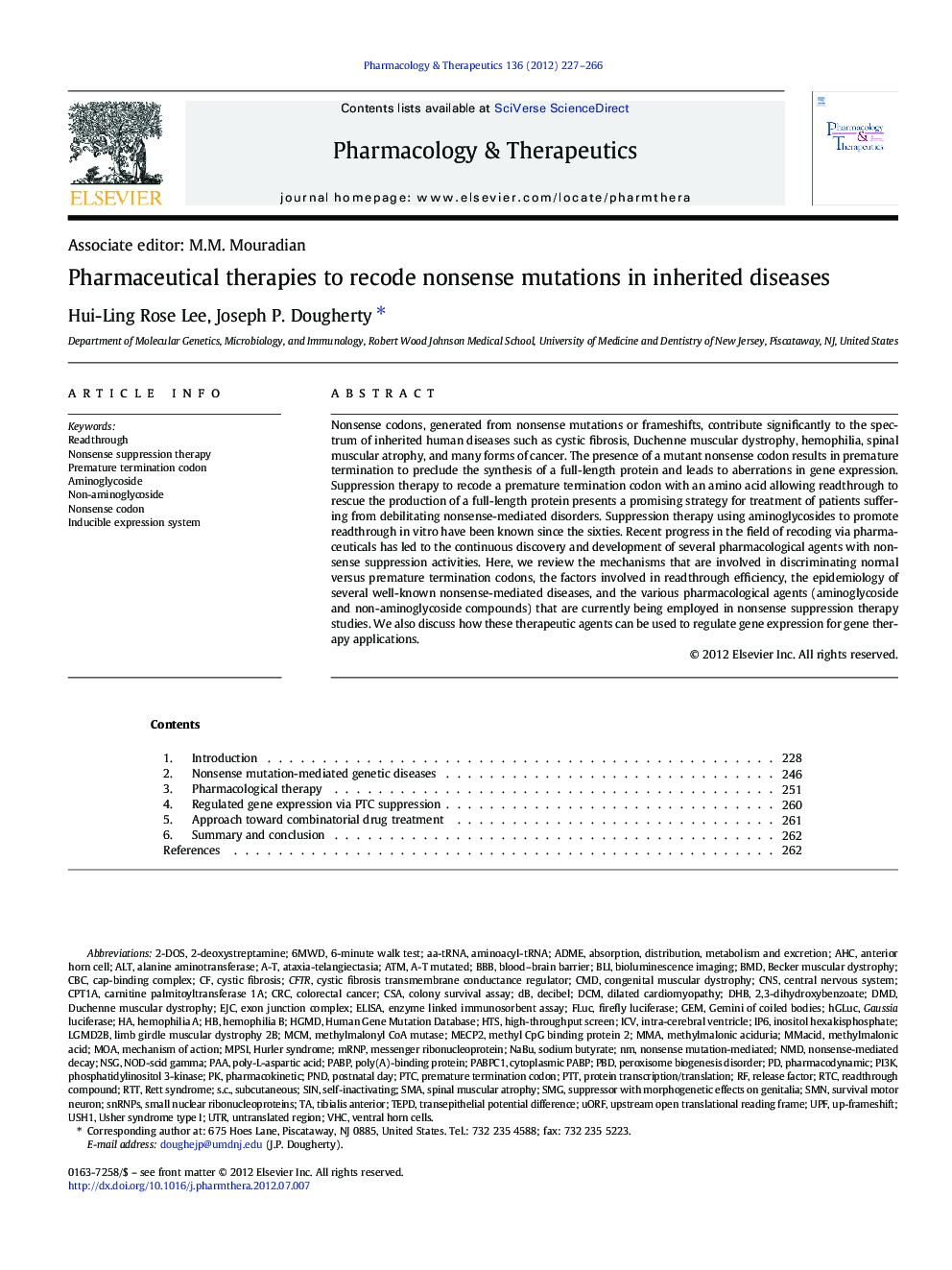| Article ID | Journal | Published Year | Pages | File Type |
|---|---|---|---|---|
| 2563259 | Pharmacology & Therapeutics | 2012 | 40 Pages |
Nonsense codons, generated from nonsense mutations or frameshifts, contribute significantly to the spectrum of inherited human diseases such as cystic fibrosis, Duchenne muscular dystrophy, hemophilia, spinal muscular atrophy, and many forms of cancer. The presence of a mutant nonsense codon results in premature termination to preclude the synthesis of a full-length protein and leads to aberrations in gene expression. Suppression therapy to recode a premature termination codon with an amino acid allowing readthrough to rescue the production of a full-length protein presents a promising strategy for treatment of patients suffering from debilitating nonsense-mediated disorders. Suppression therapy using aminoglycosides to promote readthrough in vitro have been known since the sixties. Recent progress in the field of recoding via pharmaceuticals has led to the continuous discovery and development of several pharmacological agents with nonsense suppression activities. Here, we review the mechanisms that are involved in discriminating normal versus premature termination codons, the factors involved in readthrough efficiency, the epidemiology of several well-known nonsense-mediated diseases, and the various pharmacological agents (aminoglycoside and non-aminoglycoside compounds) that are currently being employed in nonsense suppression therapy studies. We also discuss how these therapeutic agents can be used to regulate gene expression for gene therapy applications.
